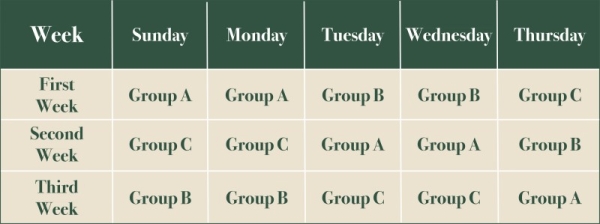


Saudi Gazette Report
RIYADH —The Ministry of Education announced the attendance mechanism for vaccinated students, by classifying school classes into 4 levels, at the start of the current school year, which will see in-person attendance.
The ministry confirmed the first version of school attendance operating models and its mechanisms depending on the number of students and the level of physical distance between them while also taking into account the other precautionary measures.
The levels are:
The Low level: The number of students in the kindergarten and primary stages will be divided into classes of 15 students or less, and in the intermediate and secondary classes the numbers will be 20 students or less, with attendance for this level being daily in the morning period for students and teachers.
The Intermediate level: The number of students in the kindergarten and primary classes will be 15 students or less, and in the intermediate and secondary classes the numbers will be 20 students or less. Students will be divided into two groups A and B, if the number of students reaches (16-30) in the kindergarten and primary stages, and (21-40) students in the intermediate and secondary stages.
Kindergarten stage: Children will attend daily for half a school day in this stage with half of the children in group A attending the first period of the school day and the other half in group B attending the second period of the school day.
Elementary, intermediate and secondary stage: Students in each group A and B attend school (5 days divided into two weeks), Group A attends the first week on Sunday, Tuesday and Thursday, group B attends on Monday and Wednesday, And in the second week the groups reverse their days.
The high level: The number of students in the kindergarten and primary stages will be divided in classes with 16-30 students, and in the intermediate and secondary stages the number reaching 21-40 students.
Students will be divided into three groups A, B and C, if the number of students reaches (31-45) in the kindergarten and primary classes, and (41-60) students in the intermediate and secondary stages.
The attendance will be daily in all the stages in this level, as students in each group A, B and C attend school (5 days divided into three weeks) with Group A attending the first week on Sunday and Monday, Group B attending on Tuesday and Wednesday, and Group C attending on Thursday. And in the second and third weeks the groups will reverse their days.
The very high level: The number of students in the primary classes will be divided into 31-45 students, and in the intermediate and secondary stages 41-60 students.
Students will be divided into four groups A, B, C and D, if the number of students reaches (46 or more) in the primary stage, and (61 or more) students in the intermediate and secondary stages.
The attendance will be daily in this level and it will be divided into morning and evening shifts, as students in each group A, B, C and D attend school (5 days divided into two weeks). In the morning shift Group A attends the first week on Sunday, Tuesday and Thursday, Group B attends on Monday and Wednesday.
In the evening shift Group C will attend the first week on Sunday, Tuesday and Thursday, and the Group D will attend on Monday and Wednesday, and in the second week the groups should reverse their days.
The students at all levels who are not attending school will study through Madrasati Rawdaty platforms. This includes platforms of the private, international schools and schools for foreigners.
The ministry confirmed the importance of watching television broadcasts and activating the platforms approved by teachers in raising assignments.